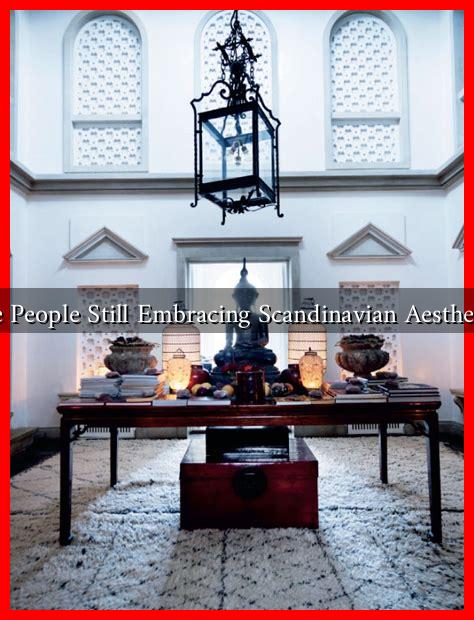-
Table of Contents
- Are People Still Embracing Scandinavian Aesthetics?
- The Core Principles of Scandinavian Aesthetics
- The Continued Popularity of Scandinavian Design
- 1. Sustainability and Eco-Friendliness
- 2. The Rise of Hygge and Lagom
- 3. Versatility in Design
- Case Studies: Scandinavian Aesthetics in Action
- Conclusion: The Future of Scandinavian Aesthetics
Are People Still Embracing Scandinavian Aesthetics?
Scandinavian aesthetics, characterized by minimalism, functionality, and a deep connection to nature, have gained immense popularity over the past decade. This design philosophy, rooted in the cultural and environmental contexts of Denmark, Sweden, Norway, Finland, and Iceland, emphasizes simplicity and sustainability. But as trends evolve, one might wonder: are people still embracing Scandinavian aesthetics in their homes and lifestyles? This article explores the enduring appeal of Scandinavian design, its principles, and its relevance in contemporary society.
The Core Principles of Scandinavian Aesthetics
At the heart of Scandinavian design lies a set of principles that resonate with many individuals seeking a harmonious living environment. These principles include:
- Minimalism: A focus on simplicity and decluttering, allowing for a more serene space.
- Functionality: Every piece of furniture and decor serves a purpose, ensuring that spaces are not only beautiful but also practical.
- Natural Materials: The use of wood, stone, and textiles that reflect the natural environment promotes sustainability.
- Light and Space: Maximizing natural light and open spaces creates an inviting atmosphere.
- Warmth and Comfort: Incorporating cozy elements, such as soft textiles and warm colors, fosters a sense of well-being.
The Continued Popularity of Scandinavian Design
Despite the emergence of new design trends, Scandinavian aesthetics continue to thrive. Several factors contribute to this enduring popularity:
1. Sustainability and Eco-Friendliness
As environmental concerns grow, many consumers are gravitating towards sustainable design practices. Scandinavian aesthetics prioritize eco-friendly materials and energy-efficient designs. Brands like IKEA have embraced this ethos, offering products made from renewable resources and promoting recycling initiatives. According to a 2021 report by the Global Sustainability Institute, 66% of consumers are willing to pay more for sustainable products, indicating a strong market for Scandinavian-inspired designs.
2. The Rise of Hygge and Lagom
The Danish concept of “hygge,” which emphasizes coziness and contentment, and the Swedish term “lagom,” meaning “just the right amount,” have both gained traction globally. These philosophies align perfectly with Scandinavian aesthetics, encouraging individuals to create comfortable, balanced living spaces. The popularity of these concepts has led to a surge in books, blogs, and social media content focused on achieving a Scandinavian lifestyle.
3. Versatility in Design
Scandinavian design is incredibly versatile, making it suitable for various settings, from urban apartments to rural homes. Its neutral color palettes and clean lines can easily blend with other styles, allowing homeowners to personalize their spaces while maintaining a cohesive look. This adaptability has made Scandinavian aesthetics a go-to choice for interior designers and homeowners alike.
Case Studies: Scandinavian Aesthetics in Action
Several notable examples illustrate the ongoing embrace of Scandinavian design:
- Nordic Design in Urban Spaces: Cities like Copenhagen and Stockholm have integrated Scandinavian design principles into public spaces, creating parks and community areas that reflect the aesthetic’s emphasis on nature and functionality.
- Home Decor Trends: Online platforms like Pinterest and Instagram showcase countless Scandinavian-inspired interiors, with hashtags like #ScandiStyle and #HyggeHome garnering millions of posts.
- Retail Success: Brands such as Muji and HAY have successfully captured the essence of Scandinavian design, appealing to consumers seeking simplicity and quality in their purchases.
Conclusion: The Future of Scandinavian Aesthetics
In conclusion, Scandinavian aesthetics remain a significant influence in contemporary design, driven by a growing awareness of sustainability, the popularity of lifestyle concepts like hygge and lagom, and the versatility of the style itself. As people continue to seek comfort, functionality, and a connection to nature in their living spaces, it is clear that Scandinavian design will continue to thrive. Whether through home decor, architecture, or lifestyle choices, the principles of Scandinavian aesthetics are likely to endure, shaping the way we live and interact with our environments.
For more insights into Scandinavian design and its impact on modern living, you can explore resources like Scandinavian Design.

